The Correlation Between D&D and UX
Nikolina K.
2020-12-14
10min
Design
Believe it or not, creating a D&D, the world's most popular tabletop game, utilizes some of the same concepts as UX and UI design. Which are they?
Intro
With the recent rise in popularity of tabletop gaming (1, 2, 3), and an over-decade-long continual rise in demand for UX (and UI) experts (1, 2), it dawned on me that those two things have possibly a lot in common. Seeing how I daily indulge both, I hope to shed some new light on an unlikely connection.
To keep it simple, UX (or user experience) is a fast-growing in-demand skill that every designer should have (and developers should know some basics as well) that helps people use something with greater ease.
To keep it even less simple, UX is a set of emotional and cognitive responses a person can have as a reaction while using a product. That product can be a mobile app, a website, a brochure, but also a bicycle or a fridge. UX is created by a variety of features and their properties that affect the way a person experiences the product; animation, layout, content coherence, color, shape, visual and semantic consistency, and so on.
On the other hand, Dungeons & Dragons is a table-top RPG game that heavily relies on storytelling and rich narrative. The most basic things you need to play a game of D&D are a group of friends, paper and pen, and a set of dice. Now a lot of people are probably gonna ask what could UX and D&D possibly have in common? This article is about to present the answer to that exact question, by teaching you what you can learn from D&D to be a better UX designer. And also, how UX can help you create better D&D games for you and your friends!
Players & Clients, Dungeons & Wireframes
Let’s start by demystifying both UX and D&D, because naturally, you can’t really know what both of those things are while still preserving your 8-hour sleep schedule and social life, right? We’ll be doing that with a simple method of comparison. Behold(er).
There we go. A clear overview. However, this nifty sheet still skips over a lot of details both of these topics bring to the table. For starters, let’s take a look at what we would consider users in UX, and what in D&D.
Our users, our players
As a UX designer, generally, you could be working for a company of any size, and you’re likely going to have dozens, hundreds, or even more users who are going to be using the product you’re designing. I can hardly imagine a CEO asking for the development of a specific software for their custom-designed bathroom that only they are going to be using. Also, you won’t know most of your users personally. The best you can do is some user-testing to close that gap of ignorance.
In contrast to that, a single D&D game is commonly prepared for a couple of your friends that the Dungeon Master (DM) knows really well. They’ve all probably known each other since high school.
Just to be clear, we’re not talking about the process tabletop-gaming companies have to go through to put a game system out on the market. That’s a whole other thing, and we just might cover that in the future.
Who creates what?
Continuing on, we can safely say that both UX and D&D ultimately offer a product that a user can use. For UX, that can be as simple as an interactive wireframe, or just a bunch of papers your user sifts through with the promise of that Snickers bar as thanks for their time. For D&D, the product is a game. That game can be a one-time thing, commonly called a one-shot. It can also be a campaign, which consists of multiple sessions. Each of those sessions can last anywhere from an hour to 12 hours or even longer. My personal record is 16 hours.
The product created for UX usually requires a group of people; a project manager, a developer, a designer, a client, and possibly some other roles such as a salesperson, and so on. D&D games can, in turn, be created by just one person using the available rulesets and guidelines. It should be noted that mass-marketed D&D games are also created by a group of people, from writers, project managers, artists, and so on. We could also argue that a person with some coding experience, design knowledge, and enough time, could create their own UX product as well (i.e. a simple website or a mobile app).
It’s interesting to observe how many similarities (and differences) those two products can have. As the above table shows us, neither a UX product nor a D&D game need any visuals. In fact, a D&D game can function purely in the user's imagination. For UX, as we’ve mentioned, a simple pile of papers might be enough.
Bringing our flows to life
In UX, we’ll make sure we position the elements where users expect them, to navigate them through our happy path (1), see where they naturally stray off that path, and what their needs are. When we know even more about our users from that, we’ll reiterate, rinse, and repeat. All of that until we get the product that the client wants, the users need, and the devs can develop.
In D&D, you’ll cry the night before and hope for the best. … That’s a joke. A lot of dungeon masters think improvising the whole game is an accomplishment. But taking your time to craft an intricate story with your players in mind is even more rewarding. In D&D, you prepare a story that is going to span across multiple sessions. Players are going to expect to be able to interact with it, to change its flow, talk to the other characters that appear, and so on.
Players in D&D will have more chances and the ability to change the product. Much like in UX, a happy path in D&D games is mostly a nice dream, and nothing more. As a DM, you can imagine how your players will traverse the narrative adventure, but no matter how well you know your friends, they’re not really playing the game. Their characters are. And the combination of those two personalities leads us to one of the sayings from the tabletop RPG community:
“No well-crafted quest survives an encounter with the players."
This brings us to documentation. A UX project should start off with the client's wants. From there, every discussed feature is noted, and the system is defined. Project managers strive to cover all user paths and edge cases through discussion and collaboration with developers and designers. A proper D&D game has documentation as well. Lore and history about the world that the players live in, details about various characters they encounter (commonly known as NPCs, or non-player characters) and the notes about the plot itself. During the game, the DM has those notes in front of them to better guide the flow of the game.
Before the products are given to users, they need to be developed from the documentation. For D&D, that means preparing the statistics of the enemies, maps where the battles will take place, printing the hand-outs, and so on. An average UX project will first develop the flow (sitemaps, user flow), then the user interface (UI) takes place, and finally, the programmers are going to code it out. Along the line, the project might also involve some marketing visuals.
Unfortunately, your average D&D game doesn’t get that many chances for experimentation and finding out what works the best. It’s usually done a few days before the actual session takes place, and asking your friends for any advice could spoil their fun.
Thought-out consistency
Another thing UX and D&D have in common is the need for consistency across the general user experience during contact with the product.
For example, if your UX project always leads users to a popup window when they have to enter personal information, suddenly throwing them into a new tab on a full-screen page would be off-putting. The same thing then applies to UI design. If at the beginning of the project you set up a red button as the primary CTA, it wouldn’t make sense to use it for a secondary Cancel action.
It’s useful to remember this is the case in D&D as well. If you use a square grid for your battle maps, don’t suddenly introduce a hexagonal grid (unless you have a really good reason). If an NPC is clearly shown doing evil things without remorse, don’t suddenly make them a martyr for some secret good cause.
But does it make me money?
Sadly, if you’re aiming to get rich, D&D won’t help you much. It will even lose you money. The core books and a set of dice cost around $110. Of course, developing a UX project from the start to the final product will also require some hefty initial investment, but if you play your dice right, you might just end up with a proper return.
Reward from a D&D game is purely emotional and intellectual; strengthening your friendships, developing empathy, developing a sense for collaboration, working on your problem-solving skills and so on. Learning exactly those skills might just help you become a better UX (and UI) designer. A good designer is one that knows how to collaborate with other members of their team.
Where do I start?
Are you a DM with a year or more experience of running games? Congratulations, read up on UX a bit, create a small project, and start applying for some sweet junior positions.
Are you a UX designer who’d like to run some games with friends? Excellent, prepare a map or two, a story, buy some dice, and remember to stay empathetic and understanding of your players. You won’t get users to interact with your product for 4 hours straight anywhere else.
And there you have it. UX isn’t a new thing. UX has been important ever since humans started creating stone tools. People thousands of years ago who sought to make the best grip on an axe couldn’t have known how important their role was, and would be in the centuries to come. People from the 60s who designed some of the first user interfaces didn’t call themselves UX designers.
Here at Cinnamon Agency, every designer is doing their best to put users first. It’s something we remind each other to do, and what we’re trying to hammer in by constant knowledge-sharing and attending UX workshops and conferences, and most of these ideas might apply to D&D as well.
In 2020, the design community is painfully aware of the market's need for people who can dive into user research, who can find pain points in the user journey, and ultimately create a product that’s going to be so easy to use, that people will think no thought was put into it anyway.
And in the same way, your players might have no idea how much effort you put into prepping that 7-hour session for them (unless you tell them), but when they keep coming back, weekend after weekend, you’ll know you’ve done a good job.
A dose of (Design) Dopamine
Updates and resources
In-depth guides
Quality content for free
Similar blogs
Sales
Mladen Šimić
2025-06-24
3min
How to Control a Software Development Agency on a Time & Material Contract
Sales
Hrvoje Herceg
2025-05-28
4min
10 Questions Clients Should Answer Before the Kick-off Call
Sales
Hrvoje Herceg
2025-05-19
3min

















